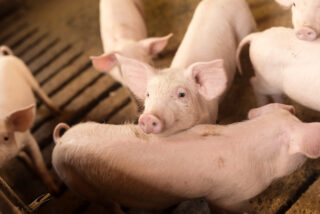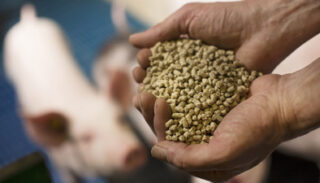Adapting
solutions for
emerging issues
Because animal production is constantly challenged, the industry is continuously developing new solutions for emerging issues. However, market-relevant concepts can sometimes be found in already existing—and proven—concepts. It simply requires a fresh angle of consideration.

Bacterial pathogen challenges
The animal production sector is constantly improving. These improvements can target housing conditions, feeding practices, technologies, well–being, or even sustainability to prevent the animals from being exposed to potential pathogens. Biosecurity and feed safety are used to fully contribute to improving the quality and competitiveness of livestock. In the swine sector, bacterial pathogens—specifically the digestive ones—are responsible for the loss of digestive efficacy during critical periods of life. This increases the animals’ requirements for feed, medicine, and care, ultimately causing higher production costs.

Proven natural solution
Free-active medium-chain fatty acids (MCFAs) are recognized as antibacterial molecules and a natural solution for digestive pathogens. Today, MCFAs are used worldwide as a possible alternative to antibiotics, zinc oxide, and other unsustainable chemicals. Well described in the literature, MCFAs act against pathogenic bacteria by disrupting the double-layered phospholipid membrane and providing a relevant natural solution for the different stages of livestock production.

How close are viruses to bacteria?
In the livestock sector, viruses are another type of pathogen that can be deleterious to the animal’s health status and technical performance. Farmers can partly cope with most viruses by utilizing proper vaccination programs. However, as observed in the last years, avian influenza and AFS are examples of viruses that have a global impact on the meat sector and are not under control. Interestingly, those pathogens—as well as PRRS and PED—belong to the family of enveloped viruses. In these viruses, the DNA or RNA materials are protected inside a double-layered phospholipid membrane that merges with the host cell membrane as the preliminary step toward infection.
Therefore, the question of how efficiently some specific combinations of free-active MCFAs can disrupt the enveloped virus structure has been successfully discovered by our researchers. By identifying the most antiviral combinations of MCFAs, Agrimprove is capable of mitigating enveloped virus risks in feed (in a non-chemical way) and contributes to improving livestock performance. By looking not only for new answers but also at existing solutions for emerging problems in the livestock sector, Agrimprove is able to support its customers in farming ideas.